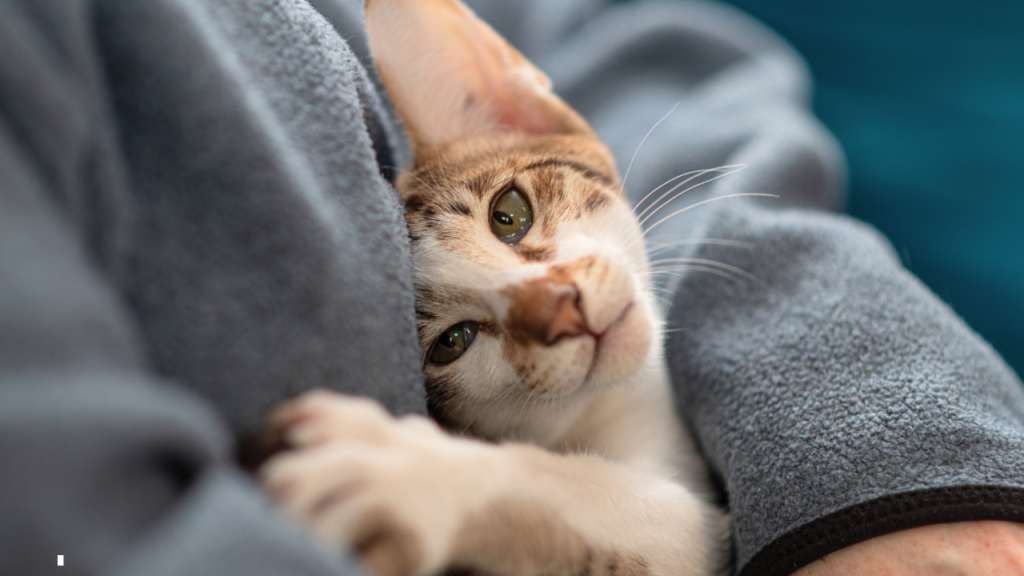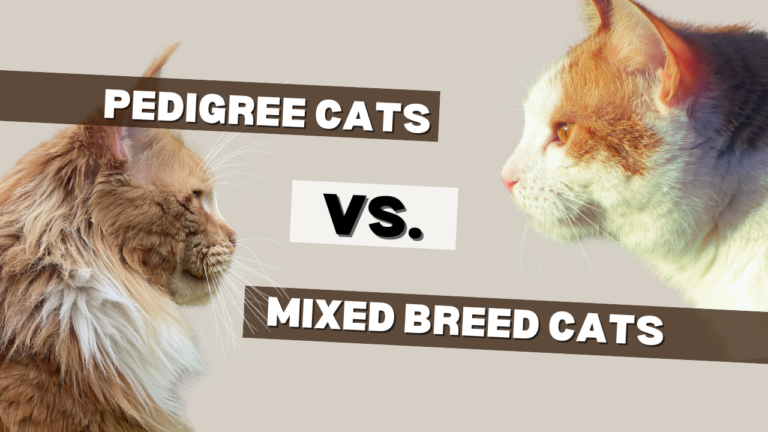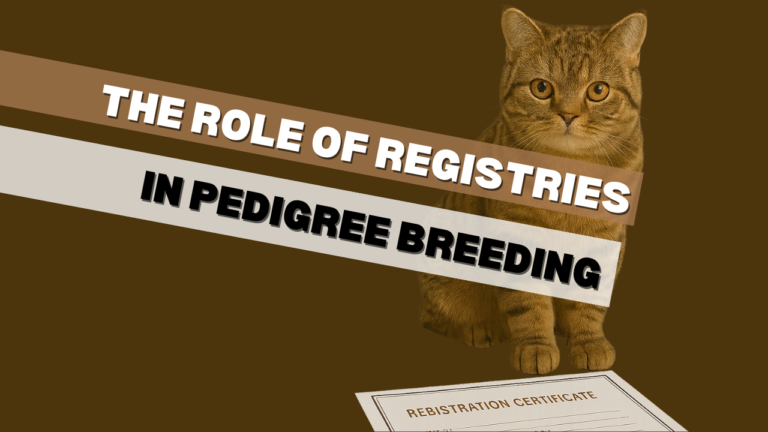How to Know You’re Buying a True Pedigree Cat
So, you’ve decided to bring a pedigree kitten into your life—congratulations! There’s something undeniably special about a purebred cat, whether it’s the elegant lines of a Siamese, the plush coat of a Persian, or the playful energy of a Maine Coon. But here’s the thing: not every kitten advertised as a “pedigree” is the real deal. It could be a mixed-breed cat.
With so many breeders, online listings, and cute faces vying for your attention, how do you know you’re getting a true purebred cat? Don’t worry—I’ve got you covered. This guide will walk you through everything you need to know to ensure your new feline friend is the genuine article, from paperwork to personality.
What Makes a Cat a True Pedigree?
Before we get into the nitty-gritty, let’s clarify what “pedigree” actually means. A pedigree cat isn’t just a fancy term for a pretty kitty—it’s a cat whose ancestry has been carefully documented, proving they come from a specific breed with a consistent lineage. Think of it like a family tree for felines. These cats are bred to meet recognized standards for their breed, whether that’s a certain coat color, body shape, or temperament.
How to Do Your Own Research and Find a True Purebred Kitten
But here’s where it gets tricky: anyone can slap “pedigree” on an ad, and not every seller is honest. A true pedigree cat comes with proof—official registration papers from a reputable cat association like the Cat Fanciers’ Association (CFA), The International Cat Association (TICA), or a similar governing body. Without that, you might just be getting a lovely mixed-breed cat with a fancy price tag. So, how do you spot the real deal? Let’s break it down.
Step 1: Research the Breed You Want
First things first—know what you’re looking for. Every pedigree breed has distinct traits, and understanding these will help you spot a genuine cat from a mile away. Want a Bengal? They’re known for their wild, spotted coats and high-energy antics. Dreaming of a Ragdoll? Look for that signature floppy, cuddly vibe and striking blue eyes.
Spend some time digging into breed standards on sites like the CFA or TICA. These organizations outline exactly what a breed should look like and act like. If a kitten doesn’t match up—say, a “Sphynx” with a full coat of fur—you’ve got a red flag. Plus, knowing the breed helps you ask smarter questions when you talk to breeders. It’s like doing your homework before a big test—you’ll feel more confident and less likely to get bamboozled.

Here’s a post about the 7 Most Popular Breeds of Pedigree Cats
Why Breed Knowledge Matters
I once met someone who thought they’d bought a purebred Abyssinian, only to realize later the cat’s stocky build and laid-back nature didn’t quite fit the breed’s slender, active profile. Turns out, it was a beautiful domestic shorthair with a hefty price tag. A little research could’ve saved them the heartache (and the wallet ache). Knowledge is your first line of defense.
Step 2: Find a Reputable Breeder
Not all breeders are created equal, and this is where the rubber meets the road. A good breeder isn’t just someone with kittens to sell—they’re passionate about their cats, committed to the breed, and transparent about their process. So, how do you find one?
Start with breeder directories from trusted organizations like the CFA or TICA. These groups often list registered catteries that follow ethical breeding practices. You can also check out the Verified Cat Breeders network—yep, that’s us!—where every breeder is vetted for legitimacy. Word of mouth works too; ask around in cat-loving circles or online forums for recommendations.
Red Flags to Watch For
Be wary of breeders who dodge questions, pressure you to buy quickly, or can’t provide clear answers about their cats’ lineage. If they’re selling kittens on a random marketplace site with blurry photos and no details, run the other way. A legit breeder will be proud to show off their cats, not secretive about them.
Step 3: Ask for Registration Papers
Here’s the golden rule: no papers, no pedigree. A true pedigree cat comes with registration documents from a recognized cat association. These papers prove the kitten’s parents (and often grandparents) are registered purebreds of the same breed. When you’re chatting with a breeder, ask to see these documents before you commit. They might be CFA, TICA, or another association’s papers, but they should include the kitten’s lineage and registration number.
Some breeders might say, “Oh, the papers are coming later,” or “You don’t need them for a pet.” Nope. If you’re paying for a pedigree, you deserve the proof upfront. Those papers aren’t just bragging rights—they’re your guarantee that the kitten’s lineage is legit.

What If You Don’t Want to Show Your Cat?
Even if you’re not planning to enter your cat in shows, those papers matter. They’re a sign the breeder is serious about their craft, not just churning out kittens for cash. Plus, it’s nice to know your cat’s heritage, right? It’s like having a little piece of history curled up on your couch.
Step 4: Meet the Kitten (and the Parents, If Possible)
Pictures are great, but nothing beats seeing a kitten in person—or at least on a video call if distance is an issue. A reputable breeder will happily arrange this. When you meet the kitten, check if they match the breed’s traits you researched earlier. A “Persian” with a pointy face instead of that classic flat snout? Hmm, something’s off.
If you can, ask to see the kitten’s parents too. Most breeders keep the mom (the queen) on-site, and sometimes the dad (the sire) as well. Seeing them gives you a sneak peek at what your kitten might grow into—and confirms they’re purebreds themselves. I’ve heard of folks who skipped this step and ended up with a kitten that looked nothing like the breed they’d signed up for. Don’t let that be you!
Step 5: Check Health and Care Standards
A true pedigree cat isn’t just about looks—it’s about health too. Responsible breeders prioritize their cats’ well-being, and that shows in how they care for their kittens. Ask about vet checkups, vaccinations, and genetic testing. Many breeds have specific health risks—like polycystic kidney disease in Persians or heart issues in Maine Coons—and a good breeder screens for these.
Take a look at the living conditions too. Are the cats clean, happy, and socialized? A kitten raised in a cramped, dirty space might not be from a breeder who cares about quality. You want a kitten that’s been loved from day one—it’s the pedigree way.
Step 6: Trust Your Gut (But Verify)
Sometimes, it’s the little things that tip you off. Does the breeder seem genuinely excited about their cats? Are they asking you questions too, like whether you’re ready for the breed’s needs? A breeder who cares will want their kittens to go to the right homes. If something feels off—maybe they’re evasive or the deal seems too good to be true—pause and dig deeper.
I’ve always found that the best decisions come from a mix of heart and head. Love that kitten’s big eyes? Great. Just make sure the paperwork and process back up your feelings.
The Payoff: A True Pedigree Pal
When you’ve done your homework, found a solid breeder, and checked all the boxes, the reward is worth it: a kitten that’s not just adorable but a true representative of their breed. You’ll have the confidence of knowing you’ve invested in a cat with a verified lineage, raised with care, and ready to bring their unique charm into your life.

Buying a pedigree cat isn’t just about the prestige—it’s about connecting with a breed you love and supporting the folks who keep those lines alive. So take your time, ask the right questions, and soon you’ll be welcoming a little purebred buddy into your home. Got your eye on a specific breed already? Drop us a line at Verified Cat Breeders—we’d love to help you find the real deal.







